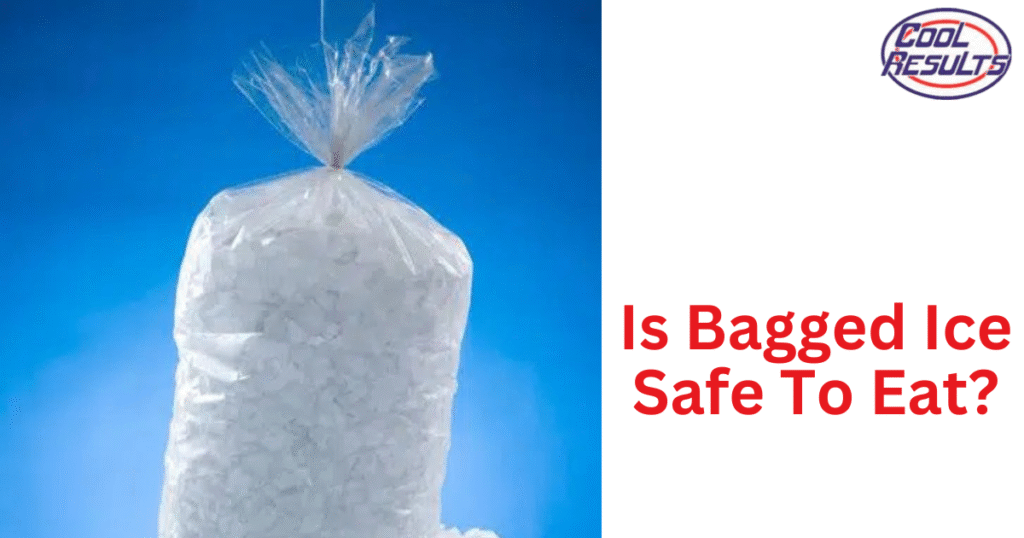
We all love a refreshing drink on a hot day, and ice is often the key ingredient. But when it comes to bagged ice, many people wonder if it’s truly safe for consumption. While bagged ice is widely available and convenient, understanding its safety is crucial. This article will delve into the factors that determine the safety of bagged ice, exploring its production process, storage guidelines, and potential contamination risks. By the end, you’ll have a comprehensive understanding of whether can you drink bagged ice and how to ensure your iced beverages are safe and enjoyable.
This article will cover the key aspects of bagged ice safety, starting with its water source and purification processes. We’ll then discuss proper storage and handling practices to prevent contamination. Finally, we’ll address common concerns about potential risks and provide tips for making informed decisions about bagged ice.
Bagged Ice Safety
The safety of bagged ice primarily depends on the quality of water used in its production and the measures taken to ensure hygiene throughout the process. Reputable manufacturers prioritize safety by adhering to strict guidelines and regulations.
Generally, bagged ice is considered safe for consumption when sourced from purified water and manufactured under hygienic conditions. However, it’s essential to remember that no food product is entirely risk-free. Potential contaminants can arise during various stages, from the initial water source to storage and handling. Therefore, being aware of potential risks and taking preventive measures is crucial.
Purified Water Source

Most bagged ice manufacturers utilize purified water as their primary ingredient. This purification process typically involves several steps, including filtration, disinfection, and demineralization, to remove impurities, bacteria, and other contaminants.
The specific purification methods employed may vary depending on the manufacturer’s standards and local regulations. However, the goal is always to produce water that meets stringent safety requirements for human consumption. By using purified water as a base, manufacturers significantly reduce the risk of harmful microorganisms being present in the final product.
Storage and Handling
Proper storage and handling practices are essential for maintaining the safety of bagged ice. Once produced, bagged ice should be stored in a clean, dry, and well-ventilated area away from direct sunlight and heat sources.
Exposure to high temperatures can promote bacterial growth and compromise the quality of the ice. Additionally, it’s crucial to ensure that the bags are tightly sealed to prevent contamination from dust, insects, or other airborne particles. When handling bagged ice, always use clean utensils and avoid touching the ice with bare hands whenever possible.
Contamination Prevention

While manufacturers take steps to ensure the safety of bagged ice, contamination can still occur during storage, transportation, or at the point of sale.
Potential Contamination Sources:
- Improper Storage: Storing bagged ice in warm environments or exposed to direct sunlight can lead to bacterial growth.
- Contaminated Surfaces: Contact with unclean surfaces during handling or transport can introduce bacteria or other contaminants.
- Cross-Contamination: Sharing scoops or utensils with other foods or beverages can transfer harmful microorganisms.
Preventing Contamination:
- Choose reputable brands that prioritize hygiene and safety standards.
- Inspect the bags for any signs of damage, leaks, or tampering before purchasing.
- Store bagged ice in a clean, cool, and dry location.
- Use clean utensils when handling bagged ice.
- Avoid storing bagged ice near raw meat or other potentially contaminated foods.
Conclusion
When it comes to can you drink bagged ice, the answer is generally yes, as long as certain precautions are taken. Bagged ice is typically produced from purified water and manufactured under hygienic conditions. However, potential contamination risks exist throughout the supply chain, emphasizing the importance of proper storage, handling, and choosing reputable brands. By following these guidelines, you can enjoy your iced beverages with confidence, knowing that bagged ice can be a safe and refreshing addition to your drinks.
